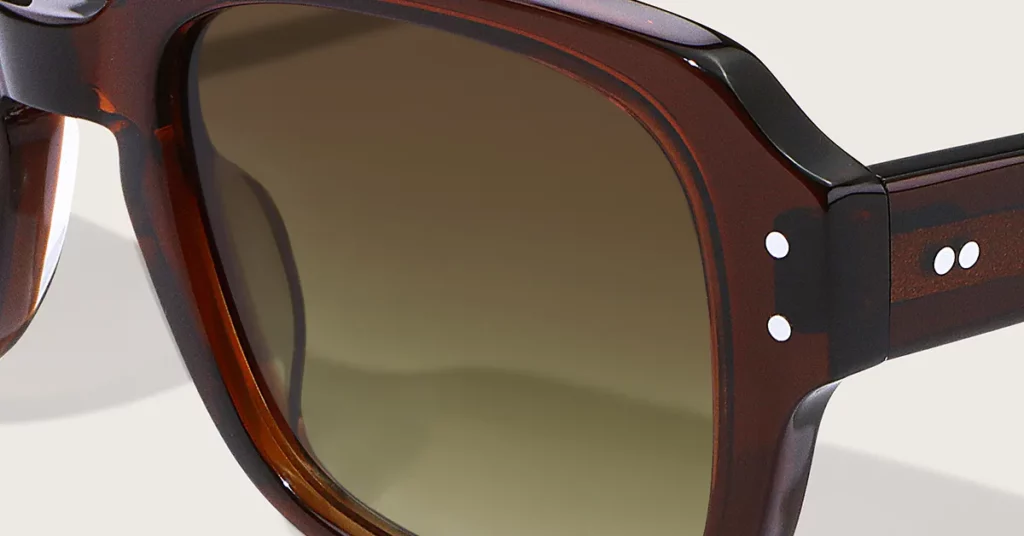For your 2026 strategy, sustainable eyewear materials refer to certified bio-acetates, recycled metals, and innovative polymers that verifiably reduce environmental impact. This includes materials like Mazzucchelli M49, which contains up to 68% renewable content and biodegrades in 115 days, directly addressing the $183.36 billion global market where 70% of consumers actively prioritize eco-friendly products.
The Strategic Imperative: Why Eco-Innovation is a Commercial Necessity
Your sustainable material strategy is a financial instrument that directly impacts three core business drivers: brand differentiation, regulatory compliance, and cost optimization. Market data shows compelling returns for brands that move decisively, as this is no longer an optional initiative but a prerequisite for market access.
Building the Business Case for Sustainable Materials
The willingness of consumers to pay premium prices for sustainable products has increased by 9.7% despite global inflationary pressures. This finding means your material choice is now a primary driver of margin potential, which provides a direct financial incentive to integrate materials that command a higher perceived value.
Critical Warning: Delaying sustainable material adoption invites market share erosion. With 85% of consumers reporting firsthand experience with climate change effects, their purchasing decisions are shifting decisively toward products with verified eco-friendly credentials.
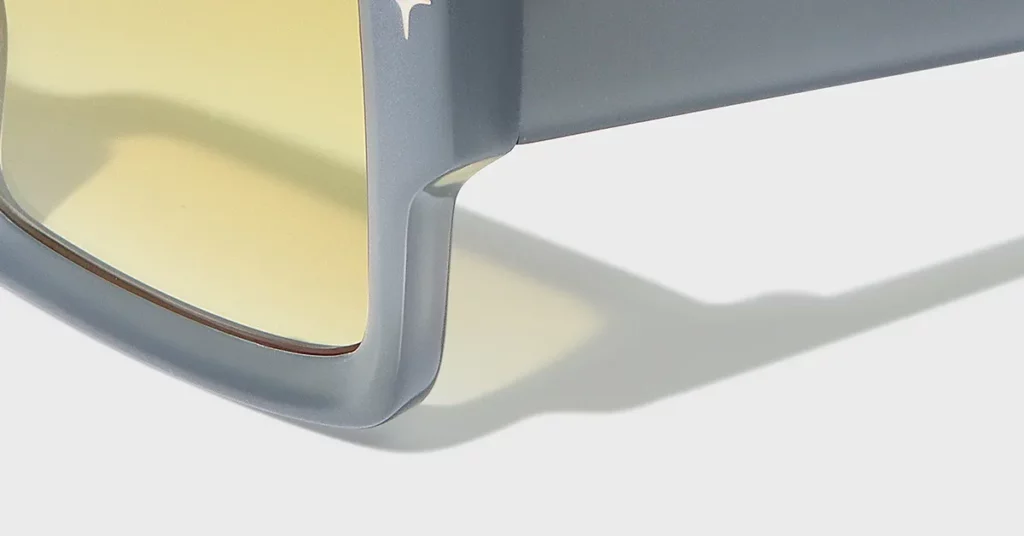
The ESG Mandate: Driving Procurement Decisions
ESG reporting is now mandatory for many publicly listed companies, which compels absolute transparency in supply chain sustainability. This means your manufacturing partners must provide verifiable environmental performance metrics, or you risk being excluded from major retail and institutional procurement contracts.
Best Practice: You must document your material sourcing with chain-of-custody certifications. Demand credentials like the Global Recycled Standard (GRS) and Forest Stewardship Council (FSC) from your partners to satisfy any ESG auditing requirements without fail.
The ROI of Sustainability: Balancing Costs and Margins
While premium sustainable materials like bio-acetate can cost 15-20% more upfront, this initial investment is offset by tangible financial returns. This is because these materials justify a higher retail price, which directly translates to increased profit margins and enhanced brand equity. Your cost calculation must extend beyond the material price to include waste reduction and compliance benefits.

Competitive Landscape: A Market Analysis of Eco-Material Adoption
Early market adopters have already established significant competitive barriers through the strategic implementation of sustainable materials. Your market positioning for 2026 depends entirely on understanding their playbook and identifying untapped differentiation opportunities.
How Brands Leverage Sustainability for Differentiation
| Brand Type | Strategic Application | Competitive/Financial Outcome |
| Luxury Brands | Positions bio-acetate as a premium feature through environmental storytelling. | Commands higher price points and reinforces exclusivity. |
| E-commerce Platforms | Implements virtual try-on for sustainable collections. | Reports 94% conversion rate increases and captures a growing online demographic. |
| Startup Brands | Builds entire brand identity around a unique eco-material (e.g., recycled ocean plastic). | Generates massive media attention and viral consumer engagement. |
For Example: Ray-Ban’s bio-based Wayfarer contains 67% renewable content. This move allows an iconic, mass-market brand to pivot into a sustainability leadership role, capturing a new customer segment without abandoning its core design appeal. Your brand can apply the same principle to your hero products.
Pioneering Brands as a Case Study
Brands like Eco Eyewear and Rolf Spectacles demonstrate how sustainability can be weaponized for market dominance. Eco Eyewear’s “One Frame, One Tree” program creates a direct, tangible link between purchase and impact. This fosters measurable brand loyalty that is difficult for competitors to replicate.
Rolf Spectacles’ use of proprietary 3D-printed eco-materials is a masterclass in building a competitive moat. By patenting unique lens-fitting processes for their wooden frames, they transformed a sustainable innovation into a defensible intellectual property asset, creating long-term value beyond the product itself.
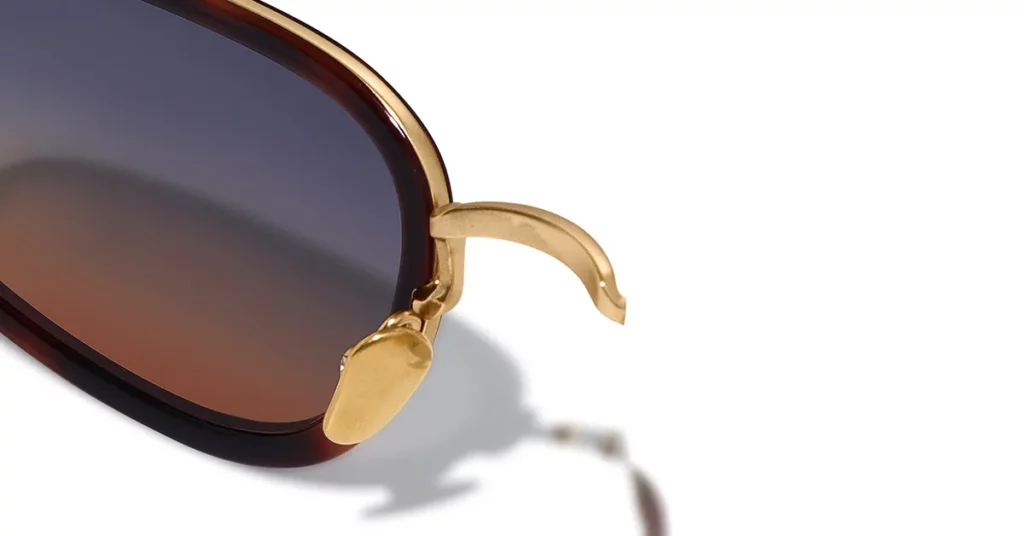
The 2026 Materials Matrix: A Commercial & Technical Analysis
Your material selection is a strategic decision that will dictate your product’s performance, cost structure, and market story. You must analyze these options not just for their eco-credentials, but for their commercial viability and supply chain reliability.
Plant-Based & Bio-Acetates: The Premium Mainstay
Bio-acetate is the most commercially viable sustainable material for premium eyewear. A product like Mazzucchelli M49 contains 68% renewable ingredients derived from cotton and wood pulp. It uses a vegetable-origin plasticizer, which eliminates your dependency on fossil fuels without compromising material performance.
Key Metric: Premium bio-acetates have a bio-based carbon content of 54% to 67%. This technical specification is what allows for biodegradability claims under ISO 14855, a critical third-party verification for authentic marketing.
Performance & Aesthetics vs. Traditional Acetate
Bio-acetate offers superior hypoallergenic properties because it eliminates petroleum-based irritants. This is a functional benefit that directly improves the customer experience and can be a powerful marketing claim. Its color retention also exceeds traditional acetate due to the natural fiber integration, protecting your brand’s aesthetic integrity over time.
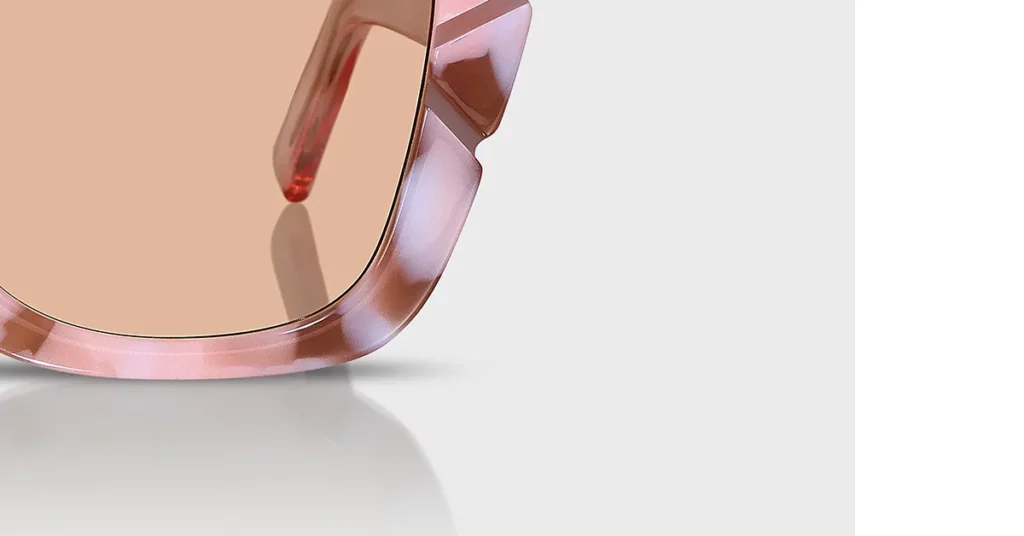
Recycled & Upcycled Materials: A Viability Framework
Recycled materials offer an immediate reduction in environmental impact. Your evaluation framework must rigorously assess material consistency, supply chain reliability, and performance characteristics to avoid production failures and brand damage.
| Material Type | Sourcing & Key Challenge | Performance & Commercial Viability |
| Recycled Acetate (r-Acetate) | Sourced from pre-consumer factory scrap. The key challenge is color consistency across batches. | Eastman’s Acetate Renew contains 40% certified recycled content and maintains premium performance. |
| Recycled Metals | Stainless steel and titanium from post-consumer sources. The key challenge is verifying purity for skin contact. | Retains 100% of virgin strength. Can reduce material costs by 20-30%, boosting your product margin directly. |
| Recycled Polymers (rPET, ECONYL®) | Sourced from items like post-consumer bottles and discarded fishing nets. The challenge is ensuring traceability. | ECONYL® offers superior impact resistance for sport. Costa Del Mar’s Untangled Collection proves commercial success. |
Pro Tips: For recycled metals, demand mill test reports and purity certifications. This non-negotiable step protects you from using materials with sub-par anti-corrosion properties that could lead to warranty claims and reputational damage.
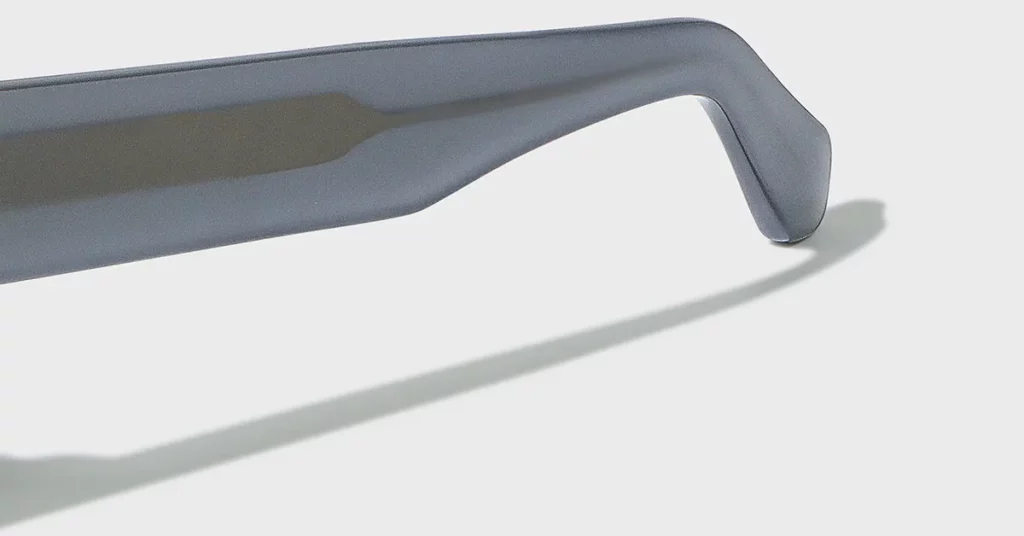
Niche & Novelty Materials: Brand Story vs. Scalability
| Material | Primary Benefit (Brand Story) | Primary Challenge (Scalability) |
| Wood / Bamboo | Unique aesthetic, strong environmental story. | Seasonal harvest cycles and manual finishing constrain volume. |
| Upcycled Vinyl | High-end artisanal narrative, exclusivity. | Limited material availability restricts production to small batches. |
| Cork | Lightweight comfort, renewable harvesting. | Requires specialized processing and skilled labor, increasing complexity. |
The Bottom Line: Niche materials are excellent for halo products or limited editions that build brand heat. However, for your core B2B collections, you must prioritize materials with stable, scalable supply chains like bio-acetate or recycled metals.
High-Performance Innovations: The Future of Sport
For technical eyewear, you must fuse sustainability with performance. Bio-based polyamides derived from castor oil (like Arkema’s Rilsan®) are a prime example. These materials contain up to 65% renewable content while delivering exceptional flexibility and impact resistance superior to many petroleum-based polymers.
Additive manufacturing, or 3D printing, is another key innovation. It allows for on-demand production using sustainable powders like recycled polyamide, which eliminates material waste almost entirely. This process directly reduces inventory risk and unlocks mass customization capabilities for premium segments.
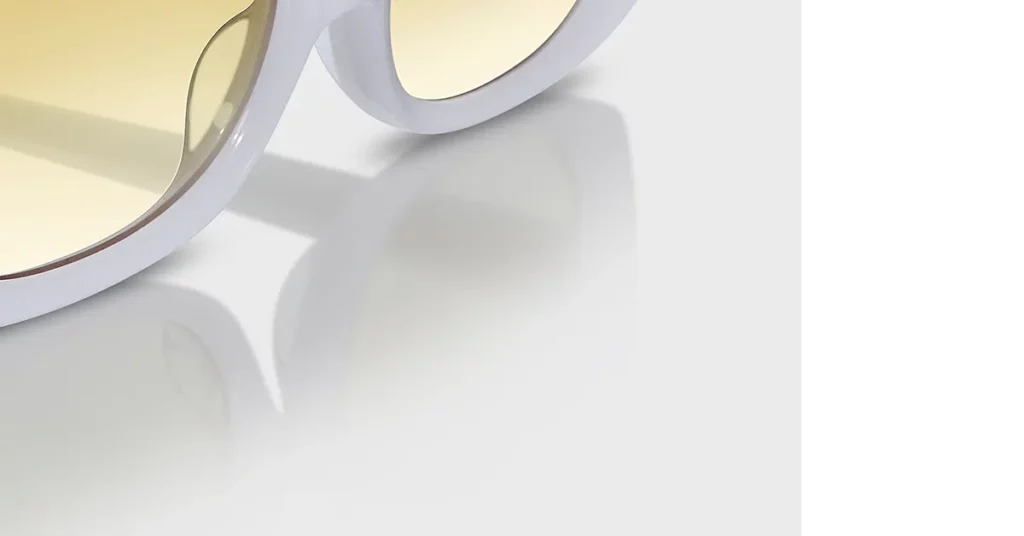
The B2B Execution Playbook: From Design to Vetted Partner
A brilliant material strategy is useless without flawless execution. Your success hinges on a disciplined process for creating technical specifications and vetting your manufacturing partners.
The Eco-Tech Pack: Your Mandate for Production
Your tech pack must be an unambiguous set of instructions. It must mandate exact material compositions, such as “Mazzucchelli M49 or equivalent with minimum 65% bio-based content.” It must also specify required certifications (e.g., GRS, FSC) and the AQL standards for inspection. This rigor prevents unauthorized material substitutions that would compromise your brand’s integrity.
A Framework for Vetting Sustainable Manufacturing Partners
Your partner selection is the most critical decision you will make. You must conduct a two-pronged audit that assesses both their technical capabilities with eco-materials and their own corporate ESG footprint.
- Technical Audit: Demand to see sample products made with the exact bio-acetate or recycled metal you specified. Assess their machinery and quality control systems for handling these specific materials. A history of successful production is your best indicator of future performance.
- ESG Footprint Audit: Evaluate their facility’s environmental management systems. Ask for proof of water recycling programs, renewable energy usage, and social compliance certifications like SA8000 or Sedex. A partner with a poor ESG record creates a direct liability for your brand.
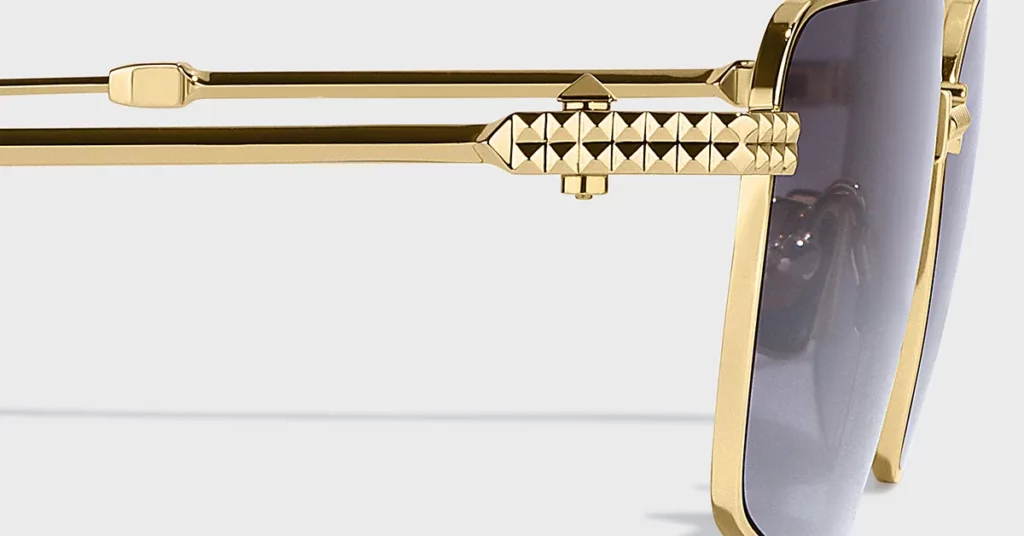
Risk Mitigation & ROI: Navigating Certifications and Profitability
Certifications are not marketing badges; they are risk mitigation tools. They provide third-party validation that protects your investment, justifies your premium pricing, and grants you access to the most discerning B2B procurement channels.
A B2B Guide to Global Certifications
| Certification Type | Standard | What It Verifies for You |
| Material & Chain of Custody | GRS, FSC | Verifies the exact percentage of recycled content or that wood comes from sustainably managed forests. |
| Material Performance | ISO 14855 | Validates biodegradability claims under scientific, controlled conditions. |
| Company-Level Integrity | B Corp | Assesses a partner’s entire social and environmental performance, acting as a holistic indicator of reliability. |
Avoiding the Pitfalls of “Greenwashing”
Greenwashing is the fastest way to destroy brand equity. You must be vigilant in identifying and rejecting partners who make vague claims. Authentic sustainability is built on verifiable data, not on ambiguous terms like “eco-friendly” or “green.”
Critical Warning: If a potential supplier cannot immediately provide current certification documents (e.g., a GRS scope certificate) or batch-specific composition data, you must consider it a major red flag. This lack of transparency often indicates superficial sustainability efforts that will become your liability.
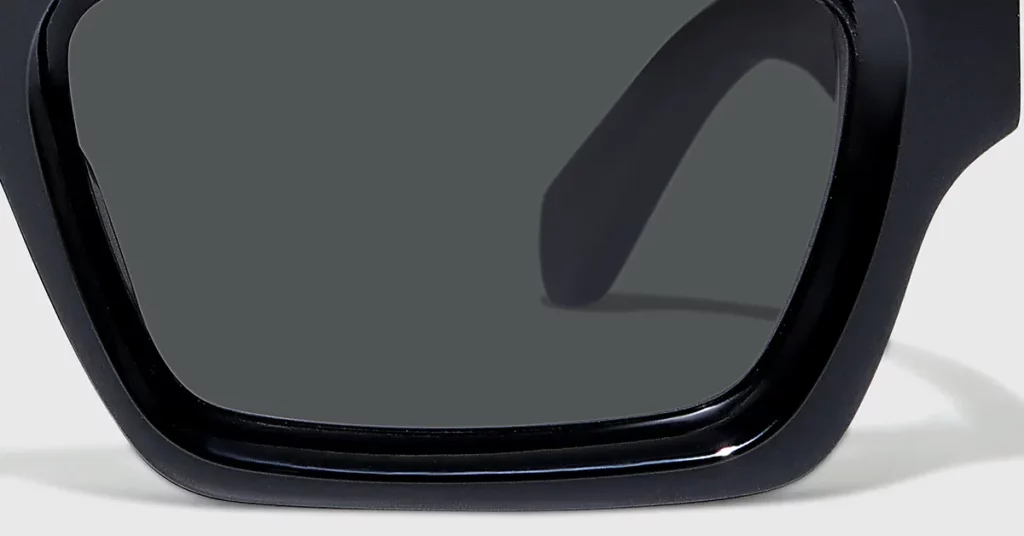
Conclusion
Adopting sustainable materials for 2026 is a strategic necessity that unlocks measurable competitive advantages. Bio-acetates, recycled metals, and performance polymers offer superior characteristics that justify premium pricing and meet rising ESG demands. Your financial success hinges on rigorous material selection, documented execution through a detailed tech pack, and partnering with a manufacturer who has proven expertise in these specific materials.
Frequently Asked Questions
1. What are the primary differences in switching a production line from traditional to bio-acetate?
Bio-acetate materials like M49 are designed as drop-in replacements, using identical equipment and processing temperatures as traditional acetate. This eliminates tooling modification costs and keeps lead times consistent. The only addition is a material verification step during initial setup to validate composition.
2. How does the Global Recycled Standard (GRS) for metals differ from other certifications?
The GRS mandates a minimum of 20% recycled content and, most importantly, requires full chain-of-custody documentation from scrap collection to the final product. To verify compliance, you must demand the supplier’s valid GRS scope certificate and batch-specific transaction certificates.
3. For sports eyewear, what are the key trade-offs between bio-based polyamides and polycarbonate?
Bio-based polyamides provide equivalent or superior impact resistance compared to polycarbonate, with the added benefits of better chemical resistance and a 15-20% weight reduction. UV protection is identical when coatings are applied, making it a performance upgrade, not a trade-off, for high-performance applications.
4. When analyzing the ROI of recycled acetate, what are the typical variances in cost?
Recycled acetate material typically costs 10-15% less than virgin acetate. When you factor in reduced waste disposal fees, the total cost-per-frame reduction can be significant. This allows you to either increase your margin or reinvest the savings into other premium components.
5. Beyond the frame, what are the most critical sustainable innovations to consider?
For a holistic product, you must consider bio-based lens coatings that eliminate VOC emissions, cases made from recycled cork or organic cotton, and packaging using compostable cornstarch polymers. These components complete your brand’s authentic sustainability story.

